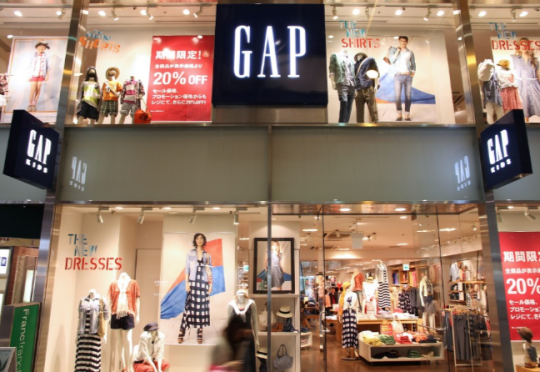
In an annual investor meeting, Gap Inc. CEO Art Peck made a
perhaps surprising admission, noting that the retailer may actually consider
selling on third-party sites such as Amazon to widen potential consumer reach.
Like
many of its contemporaries, Gap has been struggling to reverse a negative
trend in which its business has seen a decline in revenue and profit for five
straight quarters. Considering the retailer is set to close 75 of its Old Navy
and Banana Republic locations in 2016, it’s safe to say the company now is more
willing to enter uncharted territory in hoping to jumpstart a turnaround.
The RTP team
discusses whether a potential move by Gap to sell on third-party sites such as
Amazon would make sense, and highlights whether big name retailers should consider
adopting an “if you can’t beat them, join them” approach when it
comes to competing with Amazon?
Debbie Hauss,
Editor-in-Chief: As Art Peck, Gap’s CEO, stated, it would be
“delusional” not to consider Amazon and other third party
marketplaces at a time when mall-based retail is struggling. But it is a
double-edged sword: Retailers must consider brand dilution and pricing
challenges when they make the decision to defer to marketplace sellers. The good
news would be if the marketplaces expanded the brand exposure among more target
consumers. The Gap brand is not as well known as it used to be – and it has
struggled to successfully change its brand perception along with the consumer
population. I think the high-level question is: Is it worth the trade-off?
Adam Blair, Executive
Editor: As #RIC16 keynote speaker Ken Hughes noted, the 2,000-year-old retail model of
expecting consumers to beat a path to your store is broken. Today’s
“blue dot” consumers expect retailers to seek them out, wherever they
are. And given that Amazon has nearly twice the number of unique visitors as
its closest retail rival eBay (188 million per month on average, compared to 97
million for eBay), that’s where these consumers are likely to be found. So yes,
it makes sense for Gap to leverage Amazon’s reach, particularly as its
brick-and-mortar presence shrinks. But such a move also means Gap needs to
work doubly hard to rebuild, and continually refresh, its own brand
equity. That needs to be accomplished via a mix of traditional advertising
and creative 21st-century marketing techniques, including rich media,
user-generated content and extensive social media outreach.
Alicia Fiorletta,
Content Strategist: This is definitely an interesting move for Gap. I’ve
seen many luxury and higher-end brands like Kate Spade sell their products via
Amazon, and it doesn’t seem to do any harm to their brand. As a consumer, I
actually find it extremely convenient, especially during the holidays when I’m
shopping for multiple people at a time and want to browse a variety of
different brands without hopping between Internet tabs. Some of these products
are also Prime eligible, which undoubtedly leads to a bump in customer
satisfaction. However, has the L2 article states, Gap has great omnichannel
offerings, such as reserve online, pickup in-store, and the retailer may not be
leveraging this infrastructure effectively. If Gap focuses its attention on
driving awareness and education for these offerings, while expanding to Amazon,
it may see the turnaround it needs.
David DeZuzio,
Managing Editor: It makes total sense for Gap, or any other large retailer
for that matter, to team up and sell their products on Amazon. Every company
wants to get their items out in front of as many customers as possible and, as
Adam mentioned, with 188 million unique visitors per month, it’s more than safe
to say that selling on Amazon is a no-brainer. Also, you don’t need to spend
big bucks on digital marketing to drive traffic to Amazon. Of course, Gap
shouldn’t offer all of their products on Amazon, as they will lose direct sales
revenue which may not help their cause. But, getting your items close to 200
million users is a dream for any company, large or small and is sure to
generate interest in the physical Gap locations.
Klaudia Tirico,
Associate Editor: Considering 64% of consumers start their shopping journey
on an online marketplace, I think Gap may be on to something here. Retailers
finding themselves in a slump — as Gap is — can certainly benefit from having
more real estate online (which can essentially lead to more traffic in stores).
As Alicia pointed out, some items may also be eligible for Prime, which is a
win for consumers. And as a consumer, if I liked what I saw from Gap on Amazon,
I can guarantee that I would make my way over to the brand’s online shop to see
what it has to offer there, and eventually visiting the brick-and-mortar store
to try on items I liked. In my opinion, this seems like an option that has more
pros than cons. I look forward to seeing if Gap will go through with it, and what
the outcome will be if they choose to take this route.
Glenn Taylor, Associate
Editor: The consideration to sell on a third party says more about what Gap
hasn’t been able to execute well under its own brand than anything else. Like
many of the long-running apparel brands that have done a poor job keeping up
with Amazon and emerging specialty brands, Gap hasn’t been able to
differentiate itself to really stand out among its peers. The fact that Gap offers omnichannel purchasing capabilities such as “reserve online, pick-up in-store,” which has only been adopted by 6% of specialty brands in L2′s Digital IQ Index, indicates that the retailer has put in effort to meet the customer at the touch points they desire. However, the lack of general knowledge surrounding the offering suggests a poorly marketed service, which moreover leads to the idea that differentiation is a major problem at Gap. I do think that it would be silly to brush off the idea of extra money and eyeballs that Gap products can attract on third-party marketplaces, but the main problem for the retailer remains internal.






